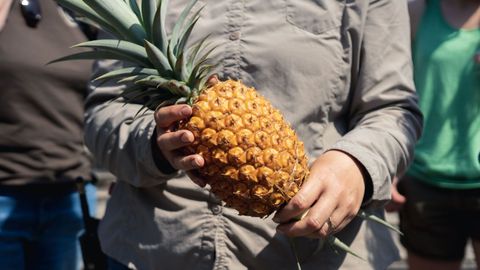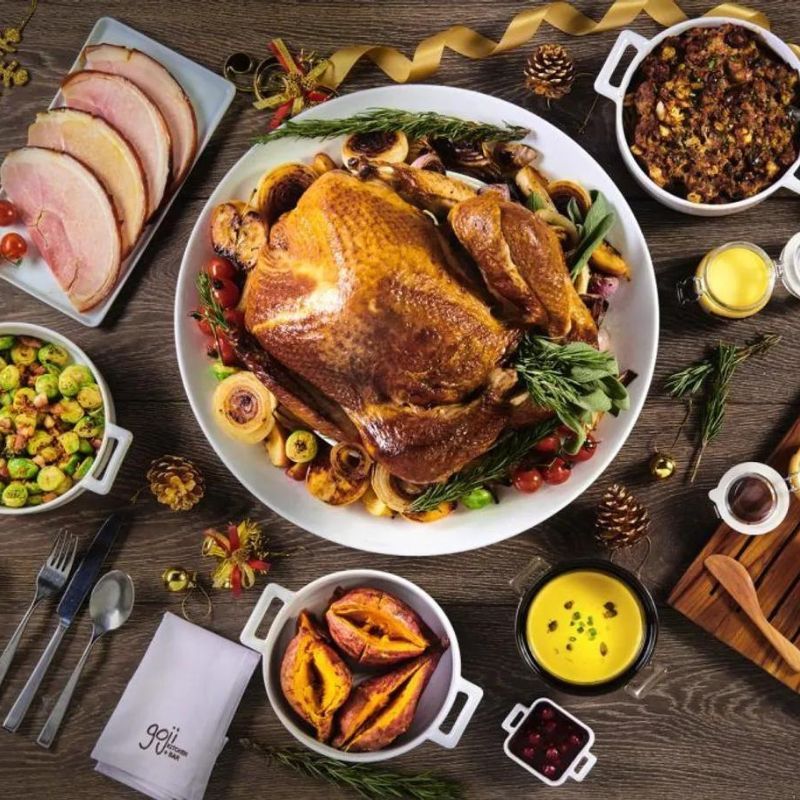
Fruits, with their vibrant colours, refreshing flavours and myriad health benefits, are a staple in our everyday diet. They are an essential source of vitamins and nutrients and are nature’s generous gifts accessible to all without breaking the bank. However, there does exist a realm of ultra-luxurious fruits boasting price tags that rival diamonds, designer bags or luxury vacations. Yes, you read that right. These most expensive fruits in this world are prized for their rarity and exceptional taste, with some being so sought-after that they’re even sold at auctions.
Get ready for a juicy journey as we unearth 11 unapologetically fancy fruits that would make the average apple blush with envy. From melons fit for kings to grapes that fetch princely prices, these extraordinary fruits take luxury to a whole new level. So, buckle up and get ready to explore the crème de la crème of nature’s bounty with our list of the most expensive fruits in the world.
11 of the most expensive fruits in the world
Yubari King Melon
View this post on Instagram
Price range: USD 200 – USD 45,000 for two
Grown exclusively in the small city of Yubari, Hokkaido in Japan, this regal melon proudly takes the crown for being one of the most expensive fruits in the world. Melons cultivated in Yubari are given delicate care and attention. Dedicated attendants act as guardians, ensuring the melons’ well-being by cleaning and monitoring them daily. These melons have become a status symbol and are cherished as special gifts.
The Yubari King melon’s exceptional flavour profile and vivid orange colour perfectly go together. Its flavour is delicious, with hints of honey and sugary sweetness. The melon’s flesh has a refreshingly crisp texture that sets it apart from other cantaloupe varieties, which are typically mushier. Additionally, Yubari King melons carry an exquisitely sweet aroma even before being opened — one that is unrivalled by other musk melons.
Ruby Roman Grapes

Price range: USD 8,400/per bunch
Sourced from the picturesque prefecture of Ishikawa, Japan, the Ruby Roman Grapes steal the show with their majestic presence. These magnificent grapes are known for their exceptional size, glorious ruby-red hue, and sweetness that transcends the ordinary. Each grape is hand-picked and treated with the highest care, promising an excellent experience.
The harvesting season begins in July, perfectly coinciding with the Ochugen holiday — a time when gift-giving is a common tradition. The grapes are raised in carefully supervised greenhouses, allowing growers to precisely watch their development to ensure maximum quality.
Lost Gardens of Heligan Pineapple

Price range: GBP 1,000 to GBP 10,000 each (USD 1302 – 13,023)
Located in Cornwall, England, the Lost Gardens of Heligan is a wonderful horticultural marvel with origins in the 18th century. One of its most intriguing features is the Pineapple Pit, a unique structure that became the centrepiece for cultivating pineapples during the Victorian era. In the 18th and 19th centuries, pineapples were highly coveted and considered a symbol of wealth and status. Because of the harsh environment in the UK, growing pineapples was a difficult venture, making them a rare and expensive delicacy. However, the gardeners at Heligan came up with a clever way to grow these tropical fruits, which could take up to two years to bear fruit.
This historic location showcases the creativity of horticulture techniques and represents the Victorian era’s quest for exotic fruits. And now it is open to visitors. These are among the world’s best pineapples, in terms of flavour. But because of their fascinating history, the majority of these tropical fruits are sold at auctions, making them some of the most expensive fruits in the world.
Densuke Watermelon

Price range: USD 250 – USD 6,000 per watermelon
Japan is home to several of the rarest and most expensive fruits in the world. From Hokkaido, the second-largest of Japan’s islands, emerges the Densuke Watermelon, a fruit that captivates with its charm. These watermelons have an alluring ebony rind and are as rare as they come. Only a few numbers of these black treasures are produced each year, adding to their rarity and mystique. Each Densuke Watermelon takes almost seven to eight months to grow to its full size. Rich in vitamins and minerals, the sweetness of this melon puts other watermelons to shame.
Miyazaki Mango

Price range: USD 100 – USD 3,600 per pair
The mango is renowned for its culinary versatility, appearing in a plethora of dishes, desserts, drinks, and even main courses. However, there exists a specific variety of mango that holds the crown for being the most expensive — the Miyazaki mango, also known as Taiyo no Tamago Mango. Cultivated in Japan, these mangoes are celebrated for their distinctive characteristics.
Dubbed the “Egg of the Sun” due to its vibrant colour and egg-like shape, Miyazaki mangoes are typically grown during the peak harvest period from April to August. Unlike regular green or yellow mangoes, the skin of Miyazaki mangoes undergoes a remarkable transformation, turning from purple to a fiery red when perfectly ripe. Beyond their visual appeal, these mangoes are packed with essential nutrients such as vitamin C, vitamin A, and dietary fibre, making them a luxurious and healthy snack.
Square Watermelon

Price range: USD 100 – USD 800 each
Craving something less mainstream? Consider square watermelons, a Japanese innovation that will make you question the laws of fruit physics.
These horticultural miracles are grown in glass boxes to make them take on an unconventional square shape. These limited-edition watermelons are a testimony to human innovation and, due to their meticulous cultivation process, can command a premium price. The square watermelon has been available for purchase worldwide since 2014, saving you the extra cost of a round-trip flight to Japan. They are equally juicy and hydrating as other watermelons and have the same flavour as their regular counterparts.
White Jewel Strawberries

Price range: USD 10 per piece
Japan continues to enchant with its array of rarest and most expensive fruits. And the white jewel strawberry stands as a testament to its allure. These strawberries, known as Shiroi Houseki (White Jewel) in Japan, have a white exterior with crimson seeds and an inside that is completely white when cut open.
The whiteness of the strawberries indicates that they are ready for consumption, despite their appearance suggesting otherwise. These expensive treats, grown by one specific producer in Japan’s Saga prefecture, sell for roughly USD 10 per strawberry and rarely appear in grocery stores. They are frequently thought of as expensive presents and have a special importance during the winter, making them popular Christmas and Valentine’s Day presents.
Sembikiya Queen Strawberries

Price Range: USD 85 per box
Savour the unique delight of Sembikiya Queen Strawberries, a treasure available only in Japan and for a limited time. These strawberries, often referred to as Nyohou Strawberries, have an exceptional taste and a tempting scarlet hue. Named after Tokyo’s esteemed fruit shop established in 1834, Sembikiya Queen Strawberries are a delicacy that embodies excellence.
These strawberries retail for about USD 85 and come in packs of 12. Each carefully hand-selected fruit has a uniform shape and dazzling gem-like lustre. These strawberries are protected from soil contact using raised cultivation techniques, which also maximise hygiene and reduce shaded areas. This approach results in evenly coloured, glossy fruits that captivate the senses.
Dekopon Citrus

Price range: USD 80 for a pack of six
Without the hassle of seeds, the Dekopon citrus fruit is an amazing fruit that blends the flavours of oranges and mandarins. Due to its top-knot shape and weight of up to 1 pound per piece, it is frequently called the Sumo citrus. The Dekopon citrus delivers a delicious blend of rich sweetness and low acidity with its easy-to-peel thin skin, and soft, melt-in-your-mouth flesh. One of the best oranges in the world, it offers a delightfully scented fruit experience that is especially cooling on a hot summer day.
The name Dekopon is derived from the Japanese terms “deko,” which means “bump,” and “pon,” which stands for the Ponkan Mandarin, the fruit’s parent variety. Dekopon oranges must meet strict requirements for quality, such as having a sugar concentration of at least 13 degrees Brix, and citric acid levels below 1%. Fruits that do not meet these requirements are typically labelled as Shiranuhi or Shiranui, named after the Kumamoto Prefecture where they were originally grown.
Sekai Ichi Apple

Price range: USD 21 each
Sekai-Ichi apples have a price tag that is almost as hefty as the fruit itself. They stand out from other apple kinds like Fuji or Red Delicious with their excellent size and uniform appearance. And these qualities are also principally responsible for their premium price. The attractiveness of these apples has a big impact on how well-liked and expensive they are. Additionally, Sekai-Ichi apples, which roughly translate to “best in the world,” are quite challenging to cultivate.
The cultivators methodically hand-pollinate and care for the trees in Japan, which serves as the primary commercial growing area for this variety. To achieve the amazing size, orchardists use unique techniques, which results in a time-consuming and expensive process. While this guarantees that the fruit that survives is enormous and nutrient-rich, the Sekai-Ichi apple’s scarcity raises the market price for them.
Buddha Shaped Pears

Price range: USD 9 each
Prepare to be enchanted by the Buddha-shaped pear, a lovely creation that has the features of chubby little Buddhas, including folded arms, happy faces, and round tummies. These are grown using plastic moulds from China’s Fruit Mould Company, which is known for its range of fruit-shaping supplies to produce everything from heart-shaped watermelons to star-shaped cucumbers, gnome-faced apples, and even peaches resembling human behinds.
These fruits are so irresistibly cute that it becomes a challenge to decide whether to savour them or preserve them as cherished display pieces. The inspiration behind these unique pears stems from the legend of a magical fruit grown in the shape of Buddha. This fanciful design was the result of a diligent farmer spending six years honing his craft. Legend says that eating one of these Buddha-shaped pears grants immortality; an enticing promise given that they are only USD 9 each.
This story first appeared here.
(Main and featured image: The Lost Gardens of Heligan
Related: 6 Banana Bread Recipes That Will Make The Most Of Your Favourite Fruit











